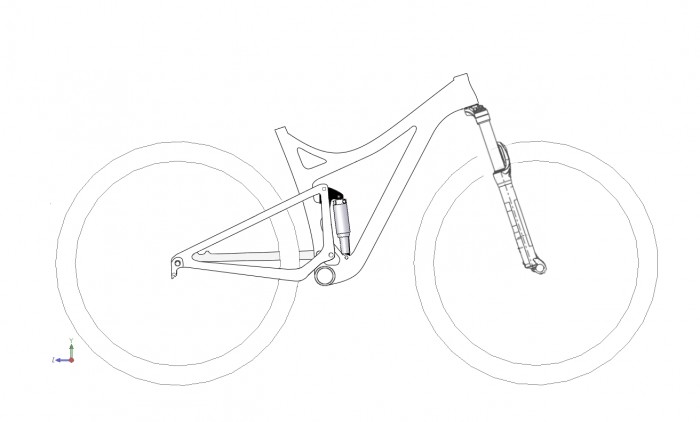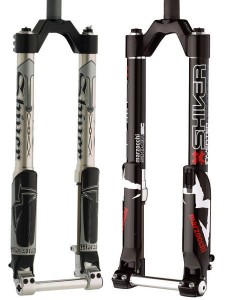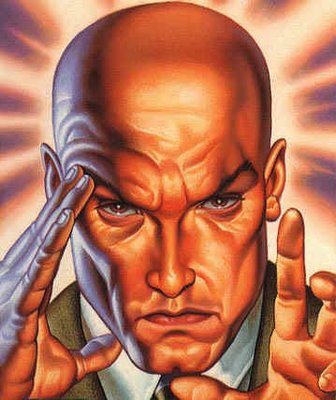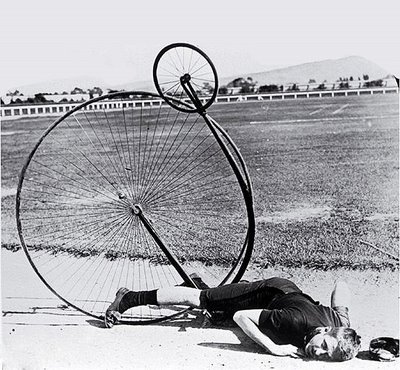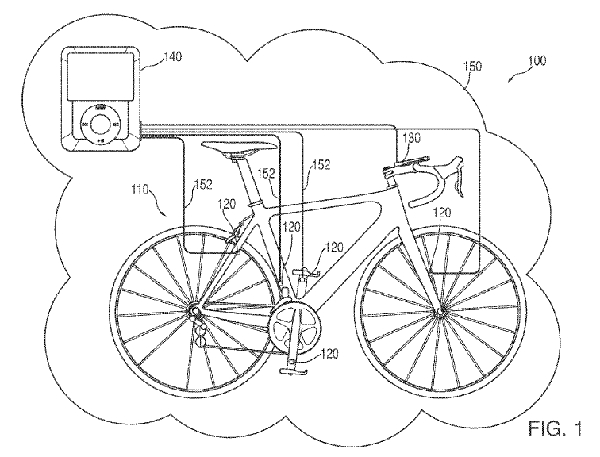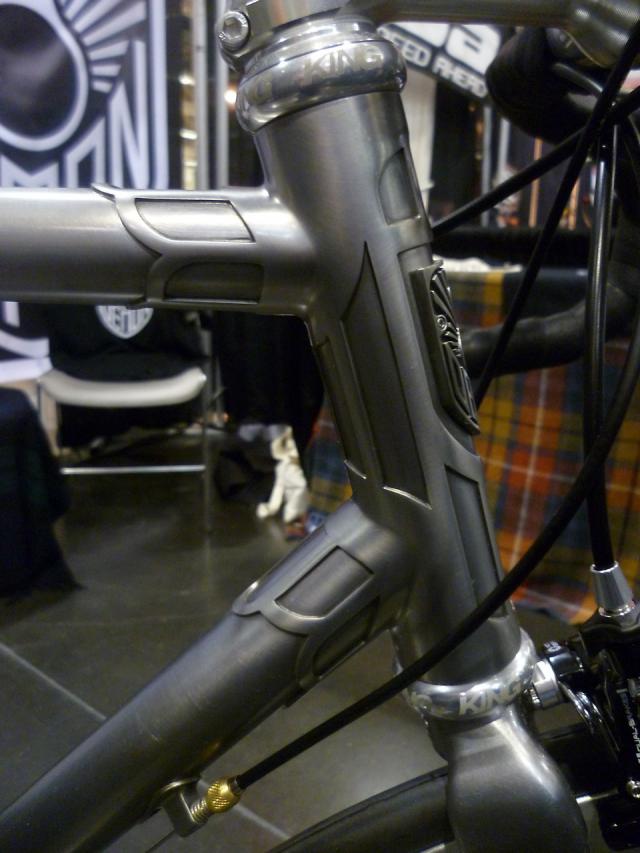I’ll admit that yesterday’s post had me missing what I guess you’d call the good old days of my little bike shop. Far from being buffoons, characters like Rich are actually pretty epic guys, the kind of people about whom tales are told.
Good people. Story makers. Legends.
The last time I saw Rich, we’d put together a night ride and were almost back to the parking lot when we noticed he wasn’t with us. I think he was using borrowed lights and had two sketchy tires and various other potentially problematic things going on, so we mounted a search party and doubled back. After an extra hour or so riding around in the woods yelling his name, we ended up finding him back in the parking lot where we’d started. Did his lights burn out? Was he OK? His explanation: he just decided to do some “freeriding.” Like God and guys who compete in those lumberjack competitions, Rich’s ways remain shrouded in mystery, and I hope he’s OK out there, still freeriding wherever he is.
Speaking of rebels with no regard for how The Man tells them they should live, by now we all know bicycles have been absorbed into the world of high fashion. Whether they’ll actually be digested or not is yet to be seen, but the insular bike industry is semi-atwitter over the entrance of Levi’s Jeans into the otherwise hallowed and bespoke world of bike commuting fashion. Yes, enough people are finally hipsters for Levi’s to bother making a skinny jean for bike riding, and like all heartless mega-corporations, they’ll probably price them for less than $200 and make them readily available, just to undercut Rapha.
But all of this high-fashion, low-brow tomfoolery is nothing compared to the cresting wave of Change about to descend on the bike industry as most of us know it.
Meet the Bicycle of Tomorrow:
As we know, there’s a lot of “interactivity” going on at the SXSW conference right now, and some of it’s taking place between bicycles and people. Specifically, people who don’t want to ride bicycles are suddenly interested in owning a bicycle, a phenomena brought on by the inevitable march of fuel costs for most Americans, along with the post-tipping-point sense that riding a bike to work is suddenly acceptable. Americans want to give this bike riding thing a try, and, being Americans, their first step in that process is to give the bike a motor. I’ll let Good.is explain the thinking:
For bike commuting to become a practical option for the average office worker, it may have to clean up its act. Not everyone can show up to work with grease-streaked pantlegs, pit-stained and panting. Bleary-eyed morning routines are challenging enough without turning them into an athletic achievement. Plus, hauling most bicycles onto public transportation can be more trouble than it’s worth in many unequipped transit systems.”
Hence the folding, electric-motored commuter bike pictured above. Designed by Gabriel Wartofsky at the Art Center College of Design in Pasadena, this particular bike’s production was given some momentum by entrepreneur Bob Vander Woude. According to Good, Vander Woude witnessed the huge increase in electric bikes in China and ran the numbers. “He cites a report from Electric Bikes Worldwide Report that found electric bikes will be one of the world’s top industries by 2025 with 130 million bikes sold per year, four times the current haul.” He’s ready to make a bet that they’re on their way here.
And he’s probably right.
What remains to be seen is what affect an influx of electric bikes will have on bike culture as we know it. Not to be all xenophobic and elitist here, but even the most casual of cyclists today has at least a passing familiarity with self-propulsion. It hurts when you pedal up hills. And while that doesn’t bring the average bike commuter particularly close to Jens Voigt level exertion, it’s something. While legal confusion still exists regarding the definition of a “bicycle” vis-a-vis “electric powered wheeled thingies,” I can’t help but think removing the effort and self-reliance from riding a bike isn’t a revolutionary new development; it’s the steampunk reinvention of cars.
Maybe that’s a good thing, and I suspect electric bikes are still more of a gateway to actual bike riding than anything else, but what concerns me is that riding a bicycle is supposed to be a little difficult. You’re supposed to have to work some and to pay attention to the world around you–something cars have shown us becomes increasingly difficult the more removed we are from exposure and physical exertion. If the wave does hit U.S. shores, I’m going to go ahead and predict carnage. Sure, carnage is always a safe bet, but if you’re frustrated with the quantity of bleary-eyed weavers on your morning commute already, wait until they don’t have to pedal to go fast and–as Good suggests–don’t have to necessarily be fully awake, either. See, a bike ride isn’t supposed to even be possible if you’re “bleary-eyed.” Contrary to what we might think, single-speeders who drink themselves right up to the starting line at local races, puke, then proceed to rip the legs off the rest of the field are actually relying on the act of bike riding to pull their shit together. Similar pre-ride rituals prove way less successful when a motor’s involved. I tend to suspect the same buzz that gets you turning the cranks is the buzz that helps keep you aware and alive in traffic.
So we wait and see. Maybe it’ll pass, or maybe electric bikes will just slip into bike culture virtually unnoticed. But probably not. It’s been scientifically proven that the gold standard in pain, the most grueling activity anyone can undertake on a bicycle, is to race cyclocross while listening to Bjork.
Like it or not, if electric bikes begin to dominate our commutes, I suspect we’ll all have a new standard.



